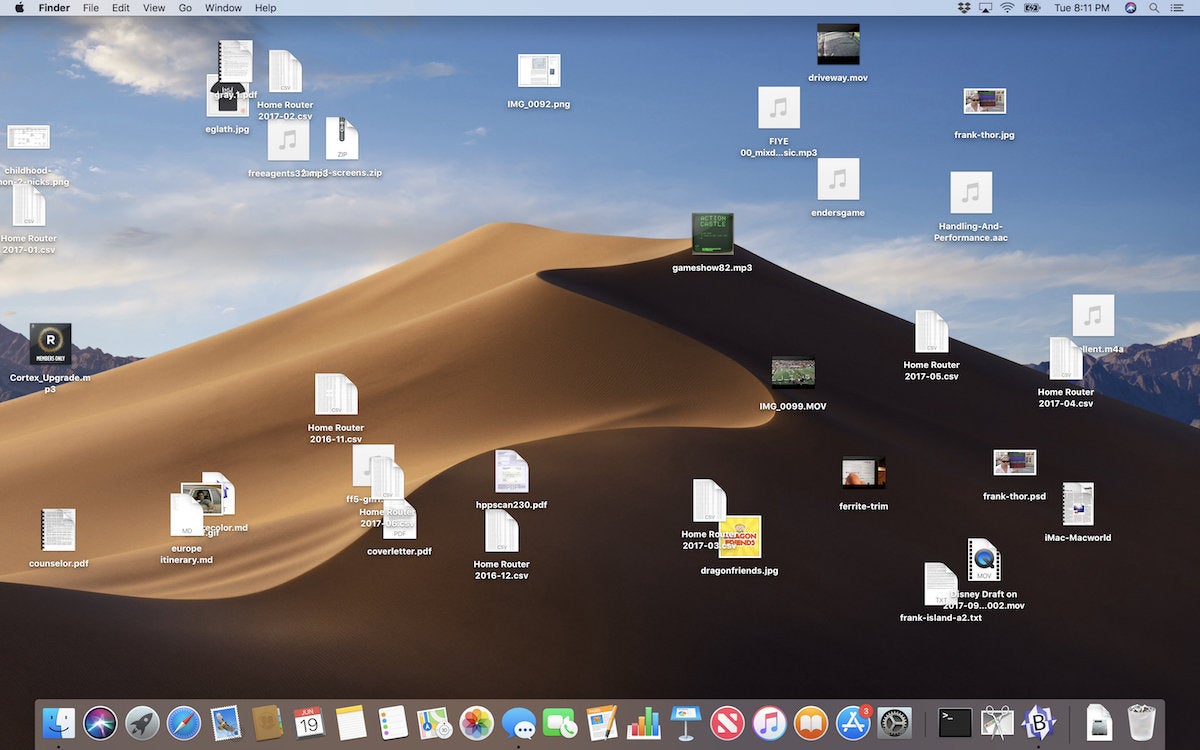
Download macOS Mojave. MacOS Mojave brings new features inspired by its most powerful users, but designed for everyone. Stay better focused on your work in Dark Mode. Automatically organize files.
Mac Os Mojave User Manual
In this case you may want to load the Mac user guide on an iPad or iPhone. (Apple Books in iOS 12 and macOS Mojave). IMac, Mac Pro, and Mac Mini. The Mac runs macOS for its operating system. The macOS Mojave Manual is packed with easy to follow guides that get to the heart of your Mac and its operating system. It’s fully up to date with Mojave, the latest version of macOS, covering all its new features and software applications, or ‘apps’. With our help, you can use your Mac like a pro. MacOS Mojave: The Missing Manual is designed to accommodate readers at every technical level. The primary discussions are written for advanced-beginner or intermediate Mac fans. But if you’re a Mac first-timer, miniature sidebar articles called 'Up to Speed' provide the introductory information you need to understand the topic at hand. The Mojave 10.14.1 update does NOT install properly on unsupported machines, and could result in an unbootable OS. If you want to install the 10.14.1 update (and are not currently running 10.14.1), perform the following steps:. Download the latest version of Mojave Patcher. Download the installer using the Tools menu of Mojave Patcher.
Mac Mail Setup
In this tutorial we will be guiding you through the process of configuring email on Mac Mail. We are using Mac Mail on OS X Version 10.14 “Mojave”. If you are using a different version or operating system, these instructions may differ.

Step 1: Add Account
Launch Mac Mail, click on Mail and then select Preferences.
Step 2: Add New Account
Click the [Accounts] button at the top.
Then click on the [+] button in the lower-left corner.
Step 3: Select Account Type
From the list of providers choose Add Other Mail Account and click Continue.

Step 4: Enter Account Information
Enter the following information:
Full Name: This is the name that will appear on all outgoing mail from this account.
Email Address: The full email address of your account (i.e. yourname@yourdomain.com).
Password: The password of your email account.
Then click Create.
Step 5: Manually Configure Account
The system will prompt you that manual account configuration is required. Click Next.
Enter the following information:
Account Type: We recommend IMAP if you are using multiple devices. If you prefer you can choose POP instead, or if this is your only device.
Mail Server: smartermail.scarabmedia.com
User Name: Your full email address (i.e. yourname@yourdomain.com).
Password: Your email account password.
Step 6: Enter Server Settings
Enter the following information:
Incoming Mail Server (IMAP)
Mac Os Mojave Manual
Automatically manage connection settings: Off
Port: 993 (IMAP) or 995 (POP)
Use TLS/SSL: Yes
Authentication: Password
Outgoing Mail Server (SMTP)
Automatically manage connection settings: Off
Port: 587
Use TLS/SSL: Yes
Posted in: Email, Setting Up Email Client
UpdatesImportant Notes:

- Using APFS is REQUIRED in Mojave in order to receive system updates via the normal Software Update method. If you choose to continue using macOS Extended (Journaled) as your filesystem type, you will NOT receive System Updates via System Preferences. If you are not using APFS, you can follow the 10.14.1 installation steps below.
- After applying ANY system update via Software Update, re-applying post-install patches using your Mojave Patcher installer volume will most likely be necessary. If you install a software update and the system fails to boot afterwards, this is what needs to be done.
10.14.6
10.14.6 can be updated normally via Software Update if using an APFS volume, and will need to be patched using an installer volume created with Mojave Patcher version 1.3.2 or later after installing.
10.14.5
10.14.5 can be updated normally via Software Update if using an APFS volume, and will need to be patched using an installer volume created with Mojave Patcher version 1.3.1 or later after installing.
10.14.4
10.14.4 adds new changes that ARE NOT patchable by the post-install tool of Mojave Patcher v1.2.3 and older! Before updating to 10.14.4, you you will need to use the latest Mojave Patcher version to create a new installer volume, using the 10.14.4 installer app. Then, update to 10.14.4, either by installing via Software Update, or by just using the installer volume you've created to install.
10.14.3
If you are currently running 10.14.1 or 10.14.2, you can simply use the Software Update pane of System Preferences (if using APFS) to apply the 10.14.3 update. Once the update is installed, you will most likely need to re-apply post-install patches to get the system to boot again. This process is detailed in steps 8 - 10 above. If you are currently running 10.14.0, you'll need to proceed with the 10.14.1 update method described below.

10.14.2
If you are currently running 10.14.1, you can simply use the Software Update pane of System Preferences (if using APFS) to apply the 10.14.2 update. Once the update is installed, you will most likely need to re-apply post-install patches to get the system to boot again. This process is detailed in steps 8 - 10 above. If you are currently running 10.14.0, or are using a non-AFPS volume, you'll need to proceed with the 10.14.1 update method described below.
10.14.1/macOS Extended (Journaled) volumes
The Mojave 10.14.1 update does NOT install properly on unsupported machines, and could result in an unbootable OS. If you want to install the 10.14.1 update (and are not currently running 10.14.1), perform the following steps:
• Download the latest version of Mojave Patcher
• Download the installer using the Tools menu of Mojave Patcher
• Create a patched USB installer
• Boot from that, and install 10.14.1 onto the volume containing an older release.
• Once done, apply the post-install patches, and you should now be on 10.14.1.
